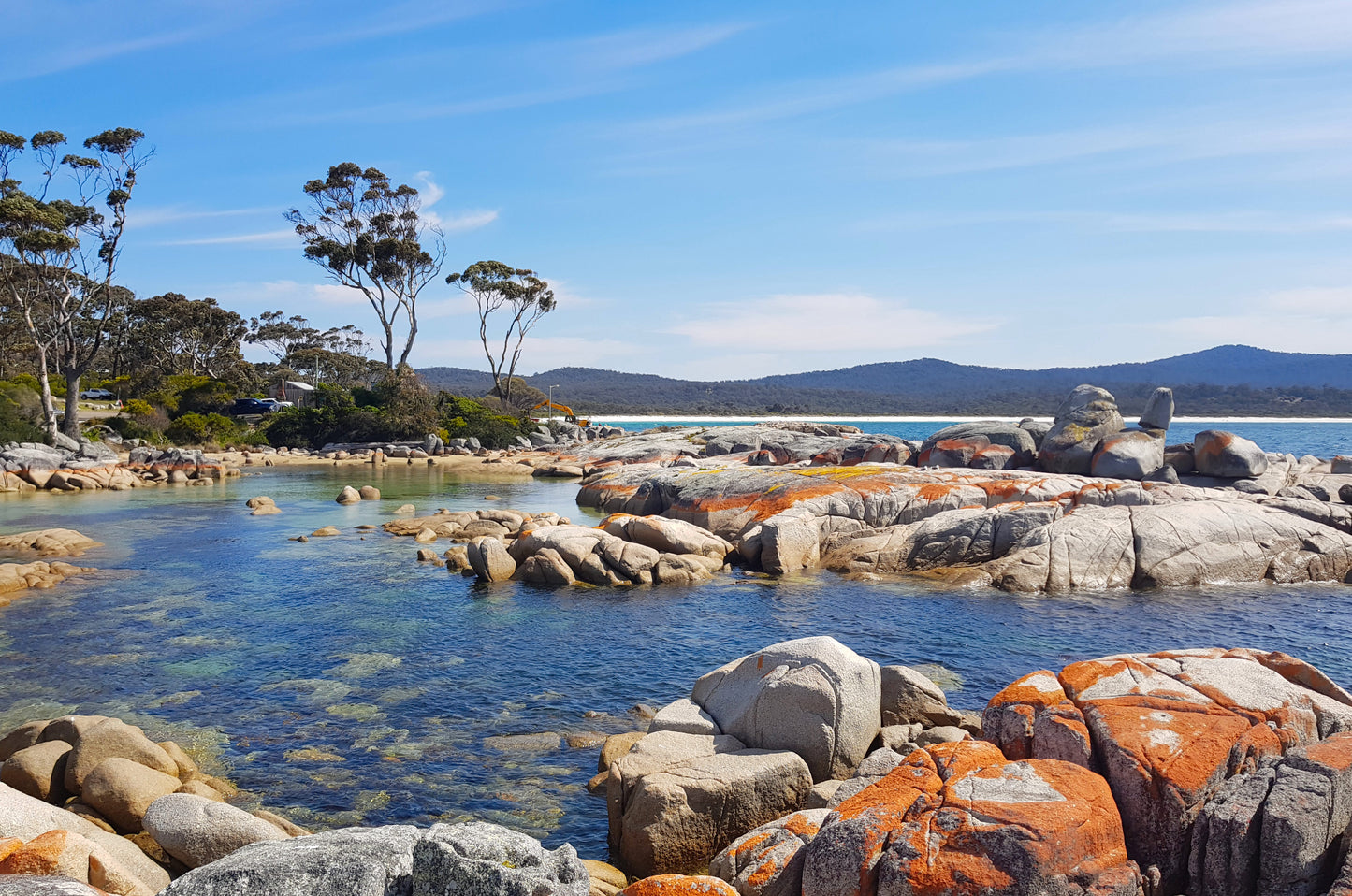Offer
Provide additional details about the offer you're running.

Walking out onto the viewing deck at Binalong Bay, it is easy to see why the region known as the Bay of Fires is one of the premier places to visit in all of Tasmania. On the platform you are treated to spectacular views of the bay and the northeast coastline stretching away into the distance.
Moving 50 metres up the hill you find yourself standing upon a great granite boulder staring out to the vastness of the Tasman Sea. From this spot you may be lucky enough to see the majestic Humpback and Southern right whales glide by during the annual whale migration to northern waters. The coastline is studded with small lagoons with crystal clear waters enticing visitors to take a quick dip to fully experience such a wondrous place.
Just 20 metres west of the viewing platform is the prettiest little tidal lagoon you will ever see. Perfect for families to spend a summer day splashing around in waters no more than a metre deep. The lagoon is surrounded by granite boulders covered in lichen with orange and yellow hues making the views both unique and delightfully picturesque. Small fish swim in the shallow waters, crabs scurry around the edge of the waters and the various coastal plants and sea kelp gently sway to the rhythm of the swell and tide.
Whenever we visit this beautiful place, the viewing platform and picturesque lagoons are always followed by a leisurely stroll along Binalong Bay Beach. After a short walk down two dozen rocky steps used to access the beach we step out onto the beach itself. Fine white sands abound in this region of Tasmania because of the high quartz content in the large granite boulders. Walking along the beach on a clear sunny day the waters transition over hundreds of metres from a light aqua blue to the deep blue of the ocean bringing to mind the coastal landscapes of Pacific islands or the Caribbean.
The area was named the Bay of Fires by the British navigator and explorer Captain Tobias Furneaux in 1773, when he noticed numerous camp fires along the coast. Some speculate that it may have also been the orange lichen all over the rocks that inspired Furneaux’s naming of the area. Whalers and sealers began using Georges Bay as early as the 1820’s and many miners descended on the area (and eventually stayed) in the 1870’s when tin was discovered.
The area around the main town of St Helens was known to Aboriginal people as "kunnara kunna", meaning "easy walking place". Fire was used by the indigenous people to sculpt the land for ease of travel, hunting, gathering and creating parkland like landscapes. I can imagine the beauty of the region would have been even more spectacular during the thousands of years the aboriginal people lived here. One can only wonder at the lives lived here over millennia by local Aboriginal people.
There is an abundance of endemic wildlife including birds, corals and a rich diverse marine environment made abundant by local offshore reefs. Aboriginal people would hunt and gather food from these in small boats and canoes. Forester kangaroos are prolific, as are Pademelons and Bennetts wallabies, all of which are best spotted at dawn or sunset. Echidnas can often be seen ambling about during the day. Tasmanian devils are in the area and scavenge at night. In spring and summer the heathlands abound in wildflowers, and the park is visited by approximately 100 species of birds.
Other places of interest in the region include the Serpentarium in St Helens for snake and reptile lovers where you can handle a python and see many different reptile species. There are also excellent fishing charters available in the estuary, offshore reefs or deep water sports fishing for marlin. Cultural tours operate in the region including Wukalina walk, a 4-day cultural experience owned, operated and guided by local indigenous people. The experience traverses the 13,899 hectare Bay of Fires conservation area and up its highest point - Mt William at 215 metres. The local guides point out bush food, useful plants, aboriginal history and areas of cultural significance. Lease 65 is a large oyster farm in Georges Bay where pacific oysters are grown and are sold direct to the public - an opportunity we never pass up for our oyster loving guests.
Travelling the east coast of Tasmania would never be truly complete without a spending some time taking in the sites of Binalong Bay in the glorious Bay of Fires. At Fun Tassie Tours we aim to show a sample of its most colourful and intimate locations, providing our guests with fantastic memories & photo opportunities.